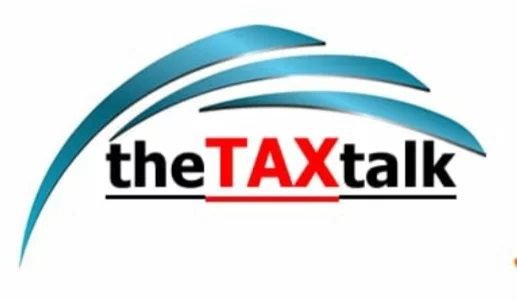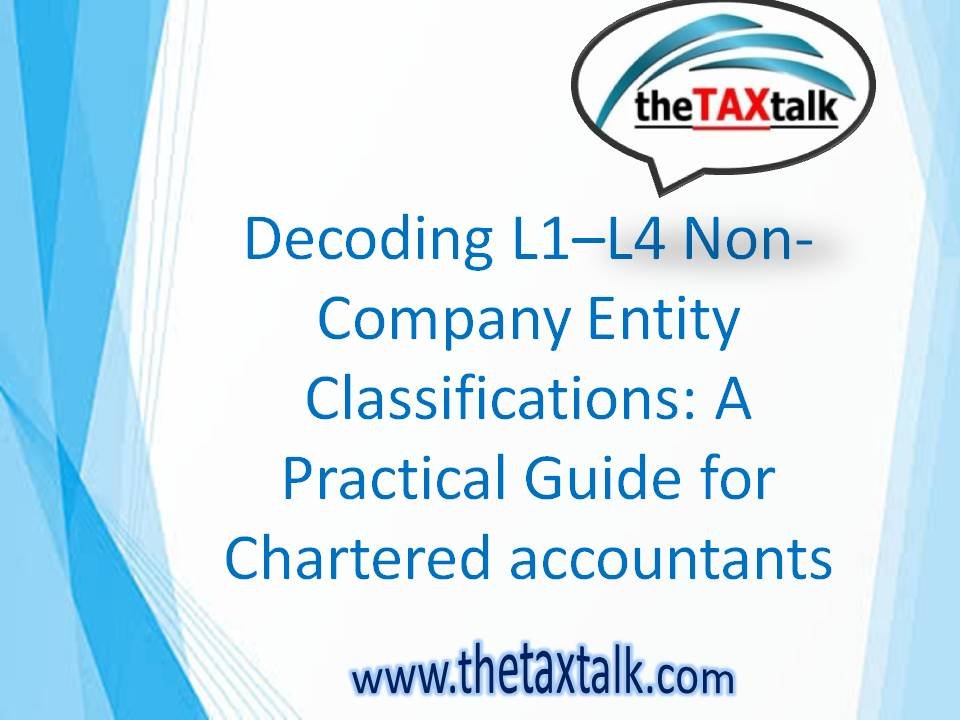![]()
Decoding L1–L4 Non-Company Entity Classifications: A Practical Guide for Chartered accountants
The Institute of Chartered Accountants of India (ICAI) has introduced a four-tier classification system—L1 to L4—under its Accounting Standards (AS) Framework for Non-Company Entities. This framework, aligned with Section 133 of the Companies Act, 2013, applies to non-corporate entities like partnership firms, LLPs, trusts, NGOs, co-operative societies, and sole proprietorships.
For Chartered Accountants, getting this classification right is no longer a routine step—it directly impacts compliance, audit documentation, and strategic client advisory.
Why the L1–L4 Classification Matters
The ICAI classification affects several core aspects of a CA’s work:
-
Audit documentation: Working papers must clearly support the classification for each financial year.
-
Accounting Standards applicability: Disclosure and recognition requirements change significantly from L1 to L4.
-
Advisory opportunities: Turnover, borrowings, and group structure planning can help clients optimise compliance costs.
-
Risk management: Misclassification can lead to adverse remarks in peer or quality reviews.
With regulatory scrutiny on the rise, precise classification is vital for professional credibility.
Overview of ICAI’s Classification Criteria
An entity is placed in the highest applicable level if it meets any one criterion.
| Level | Criteria (any one trigger) | Borrowings (preceding year, peak) | Turnover (excluding other income) | Group Linkage | Compliance Impact |
|---|---|---|---|---|---|
| L1 | Listed or in process of listing; or a bank/financial institution/insurance company | Above ₹50 crore | Above ₹250 crore | Holding or subsidiary of L1 | Full AS compliance, no exemptions |
| L2 | Not L1 | Above ₹10 crore to ₹50 crore | Above ₹50 crore to ₹250 crore | Holding/subsidiary of L2 | Partial disclosure relaxations |
| L3 | Not L1/L2 | Up to ₹10 crore | Above ₹10 crore to ₹50 crore | Holding/subsidiary of L3 | Reduced disclosure and recognition requirements |
| L4 | Not L1/L2/L3 | Up to ₹2 crore | Below ₹10 crore | Holding/subsidiary of L4 | Maximum relaxations, condensed presentation |
Compliance Requirements for Level 1 Entities
Level 1 entities must comply fully with all notified AS, including AS 3 (Cash Flow Statements), AS 17 (Segment Reporting), and AS 18 (Related Party Disclosures). Even a one-day borrowing spike above ₹50 crore can trigger L1 status.
Relaxations for Level 2, 3 & 4 Entities
-
Level 2: Moderate compliance with certain disclosure relaxations; temporary overdrafts can still cause higher classification.
-
Level 3: Simplified disclosures, especially under AS 15; turnover must exclude “other income” to avoid misclassification.
-
Level 4: Minimal disclosures; cash flow statement not mandatory, but detailed classification documentation is still essential.
Steps for Accurate Classification
-
Collect financial data early – Turnover (excluding other income) and peak borrowings for the preceding year.
-
Check all triggers – Any single criterion can determine the level.
-
Assess group linkages – Subsidiaries inherit the parent’s classification.
-
Maintain a classification note – Include criteria, calculations, and conclusions in the audit file.
-
Review annually – Classification applies on a year-to-year basis.
Strategic Advisory Opportunities for CAs
-
Borrowing management: Avoid unnecessary borrowing peaks to keep compliance costs lower.
-
Group restructuring: Where possible, restructure to prevent automatic L1 classification.
-
Revenue timing: Adjust timing of large contracts to stay within favourable thresholds.
Common Misunderstandings
-
Borrowings include all facilities and deposits, even if for just one day.
-
Turnover for classification excludes non-operating income such as rent or dividends.
-
Classification must be reassessed every year based on current financial data.
Real-World Example
A co-operative bank had a turnover of ₹220 crore and peak borrowings of ₹48 crore in one year, placing it in L2. The following year, a short-term borrowing of ₹52 crore moved it into L1—triggering full AS compliance, mandatory cash flow statements, and expanded disclosures.
Annual Audit Checklist for Classification
-
Verify the entity is a non-company.
-
Confirm listing status (domestic and foreign).
-
Calculate turnover excluding other income.
-
Review peak borrowings.
-
Assess group linkages.
-
Prepare and retain classification memo.
-
Reassess annually.
Key Takeaway
The ICAI’s L1–L4 classification framework is more than an audit formality—it defines the scope of compliance, reporting obligations, and strategic advisory possibilities for non-company entities. For CAs, proper classification and documentation not only ensure compliance but also protect against adverse regulatory findings and strengthen client trust.


